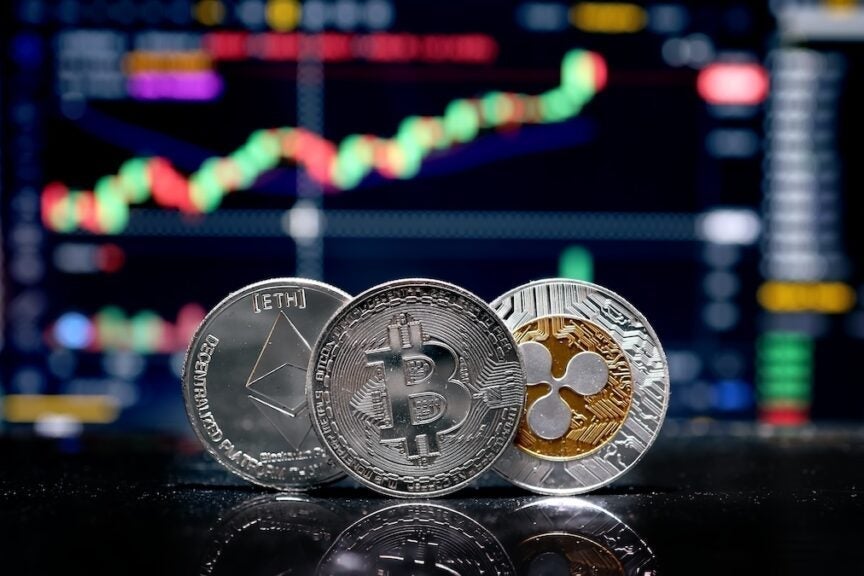Market Pulse
The decentralized finance (DeFi) sector is presenting a compelling paradox as Q3 2025 data reveals a significant divergence in key metrics. While the Total Value Locked (TVL) in DeFi protocols soared to an unprecedented record of $237 billion, signaling robust capital inflow and confidence, the number of decentralized application (DApp) wallets actively engaging with these protocols simultaneously dropped by a notable 22%. This contrasting trend raises crucial questions about the underlying dynamics of DeFi growth, user adoption, and the evolving landscape of digital asset investment.
The Unprecedented Growth of DeFi TVL
The surge in DeFi’s Total Value Locked to an all-time high of $237 billion represents a powerful indicator of the increasing institutional and sophisticated capital flowing into the decentralized ecosystem. TVL, a metric reflecting the total value of crypto assets deposited across various DeFi protocols, serves as a barometer for the sector’s liquidity and economic activity. This record high suggests a maturing ecosystem capable of attracting substantial investment, often driven by opportunities for yield generation, decentralized lending, and trading. The resilience and growth of TVL, even amidst broader market fluctuations, underscore a deepening trust in DeFi’s foundational technologies and financial primitives.
- Record Capital Influx: $237 billion TVL signifies massive liquidity and investor confidence.
- Maturity and Trust: Indicates a more established and resilient DeFi ecosystem.
- Diverse Opportunities: Capital drawn to yield farming, lending, and DEX trading.
The Troubling Decline in DApp Wallet Engagement
In stark contrast to the booming TVL, the 22% decline in active DApp wallets over the same period paints a different picture of retail engagement. DApp wallets are crucial for interacting with decentralized applications, and a drop in their numbers often points to reduced individual user activity or a shrinking base of new entrants. This trend suggests that while large sums of capital are being deployed, the broader accessibility and user-friendliness of DeFi might still be a significant hurdle for the average crypto user. It raises concerns about the “retail gap” – where the technical complexity, high gas fees, or perceived risks deter widespread adoption beyond a core group of power users and institutional players.
- Reduced Retail Participation: Fewer unique wallets indicate lower individual user activity.
- Accessibility Barriers: Complexity and high transaction costs may be deterring new users.
- User Experience Challenges: DeFi interfaces can remain intimidating for mainstream adoption.
Unpacking the Divergence: Institutional Capital vs. Retail Friction
Several factors likely contribute to this intriguing divergence. One primary theory posits a significant increase in institutional and whale capital. Large entities and sophisticated investors, with substantial assets, can significantly inflate TVL without necessarily increasing the sheer number of unique wallets. These players often utilize automated strategies, multi-signature wallets, or specialized custody solutions that might be counted as fewer distinct “wallets” compared to a flurry of small retail accounts. Concurrently, retail users may be consolidating their activities onto fewer, more trusted protocols, or simply retreating due to market volatility, regulatory uncertainty, or the pursuit of simpler, centralized alternatives for basic crypto services.
Another angle to consider is the evolving nature of DeFi itself. As the space matures, some of the initial speculative “degens” might have moved on, while the remaining, more serious participants are deploying larger sums more efficiently. This consolidation of capital in established protocols by fewer, but larger, participants could explain the observed metrics.
Future Implications for Decentralized Finance
This Q3 2025 data offers a critical lens through which to view the future trajectory of DeFi. For the sector to achieve its long-term vision of broad financial inclusion and decentralization, addressing the retail user engagement gap will be paramount. Protocols will need to prioritize enhanced user experience (UX), lower transaction costs (e.g., via Layer 2 solutions), and improved educational resources. While institutional capital brings legitimacy and scale, sustainable growth ultimately depends on a vibrant, accessible, and growing user base. The challenge now lies in bridging the divide between significant capital inflow and widespread individual participation, ensuring DeFi evolves beyond a niche for the financially savvy to a truly global financial utility.
Conclusion
The record-breaking Total Value Locked in DeFi during Q3 2025, juxtaposed against a notable decline in DApp wallet engagement, paints a complex picture of the decentralized finance landscape. It highlights DeFi’s undeniable capacity to attract substantial capital and its growing maturity, yet simultaneously underscores persistent challenges in achieving broad-based retail adoption. Addressing these user experience and accessibility hurdles will be crucial for DeFi to fulfill its promise of revolutionizing global finance, fostering a more inclusive and widely utilized decentralized economy.
Pros (Bullish Points)
- Record capital inflow validates DeFi's maturity and potential, attracting significant investment.
- Increasing institutional interest and sophisticated capital drive TVL growth and legitimacy.
- Protocols demonstrating resilience and stability to attract large, long-term investments.
Cons (Bearish Points)
- Declining DApp wallet usage indicates a struggle for broad retail adoption and potential user attrition.
- Potential for DeFi to become increasingly concentrated among a few large players, challenging decentralization.
- User experience, complexity, and high transaction costs remain significant barriers for new users.
Frequently Asked Questions
What does Total Value Locked (TVL) signify in DeFi?
TVL represents the total amount of crypto assets locked in DeFi protocols, indicating the sector's liquidity, economic activity, and investor confidence.
Why is a decline in DApp wallets concerning despite record TVL?
It suggests a widening gap between capital inflow and individual user engagement, potentially signaling barriers to mainstream adoption and decentralized access for the average user.
What are potential reasons for this divergence in Q3 2025?
Possible reasons include increased institutional and whale capital, consolidation of retail activity into fewer protocols, and ongoing challenges with user experience, education, or high transaction costs.



